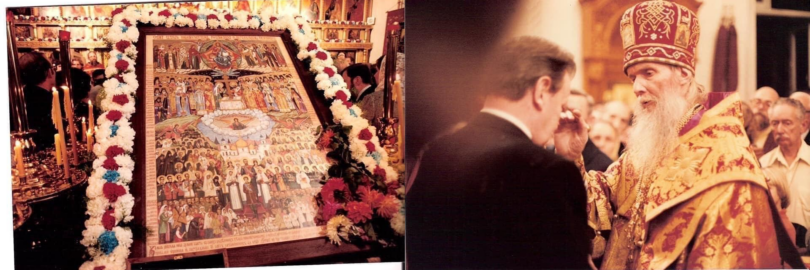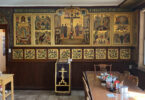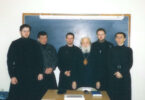On this day, the Council of Bishops of the Russian Church Abroad canonized the New Martyrs and Confessors of Russia and the Royal Martyrs.
The All-Russian Council in 1918 prescribed to collect the accounts about those who suffered for the Orthodox Christian faith. The military units of various White formations that were liberating towns from the Bolsheviks had to deal with the consequences of Red terror. Evidence about those who suffered for the faith thus began to be collected. (See the account about Archbishop Feodosii Putilin from August 12.) The veneration of the new martyrs continued in the diaspora. The 1971 Council of Bishops notes that it “bows down with reverence before the holy feat of the Russian New Martyrs and is in favor of their glorification.” In 1974, the Council of Bishops appointed Archbishop Anthony of Los Angeles to form a committee “primarily of members of the clergy in order to work out the glorification completely and in detail.” In 1975, the Synod of Bishops made a statement about collecting materials on the New Martyrs. The Synod opted out of cooperation with the Moscow Patriarchate, Paris Exarchate and the OCA, and appealed to dissidents in Russia to send materials abroad.
In his report to the 1978 Council of Bishops, Archbishop Anthony of Los Angeles discussed the question of whether or not miracles are needed for canonizing saints and came to the conclusion that miracles occur when saints are addressed with faith. “If those who doubt the power of prayerful intercession by holy martyrs demand miracles, there will not be miracles for them.”
The following conclusions in favor of glorifying the New Martyrs can be drawn from the resolution adopted by the Council on September 3/16, 1978.
- Direct indications by God regarding the glorification of the martyrs, such as the ineffable peace and valor bestowed upon Metropolitans Vladimir and Benjamin, and upon the Royal Family (cf. Mt. 10:19–20).
- “The opportunity to provide active support to our brothers in Russia, who are being oppressed, tortured, and killed within a world of hatred, persecution, deprivation, the loss of means for survival as retribution for belief, and interment in death camps and insane asylums.”
- “Streams of the blood of martyrs can extinguish the fire of godlessness.”
- Postponement of the glorification due to “the dying off (of the episcopate, clergy, and the flock) becomes tantamount to a refusal to glorify.”
- The murdered Emperor Nicholas II can be canonized on the same grounds as were the 14,000 Bethlehem infants who were killed for Christ’s sake or as was Prince St. Andrei Bogolyubsky.
The quality of the data for canonization was critical. Fr. Michael Polsky’s two volumes of the New Martyrs and Confessors of Russia predated Solzhenitsyn’s Archipelago Gulag as collection of evidence about the communists’ crimes against humanity, but some reports were second-hand. As a result of the absence of reliable data, it turned out that two of the canonized persons were still alive. There were other questions regarding those who were canonized, but they should not reduce the significance of this act of goodwill, in which the church of the Russian refugees was striving to participate in the life of their Russian homeland. At the same November 1981 Council, it was decided to consecrate a clandestine bishop (Lazar Zhurbenko) for communities of dissident Orthodox Christians within Russia. In the ten years after this glorification, the communist regime in the USSR collapsed.











